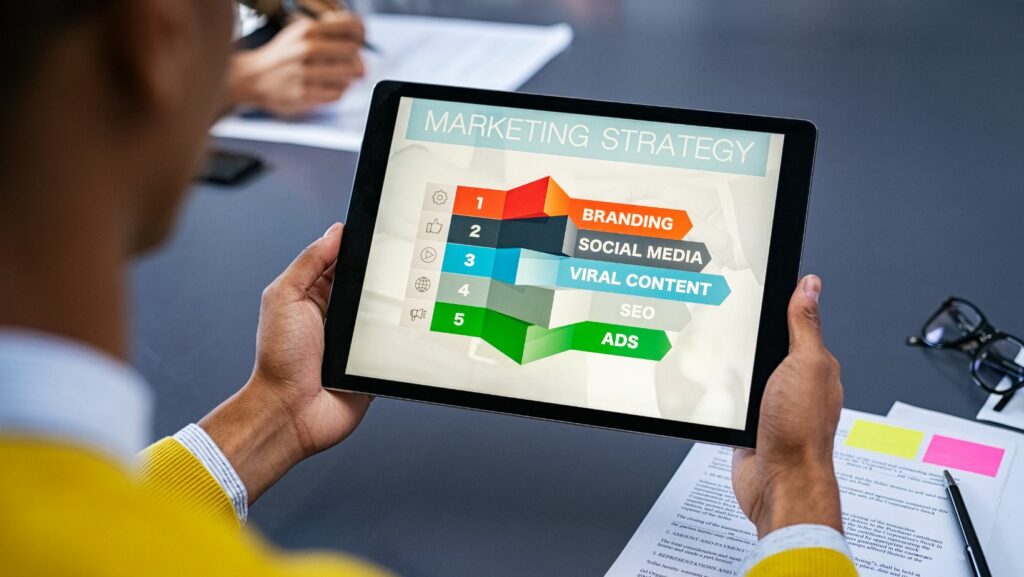
It’s a common misconception that marketing and branding are one and the same. However, these two crucial business concepts hold distinct roles in propelling a company towards success. This article will shed light on their differences, helping you understand how each contributes to a thriving business.
Marketing and branding aren’t just industry buzzwords; they’re the backbone of any successful enterprise. Understanding their unique roles and how they intertwine can be the game-changer your business needs. So, let’s delve into the fascinating world of marketing and branding, and unravel the mystery behind these two pivotal business elements.
Difference Between Marketing and Branding
To further differentiate between marketing and branding, it’s essential first to define these terms individually, understanding both their scopes and roles within a business.
What Is Marketing?

Marketing represents a wider range of activities aimed at promoting and selling products or services. It involves strategizing, creating messages to attract clients, shaping product offers, and ensuring their delivery. It utilizes tools such as advertisements, email campaigns, search engine optimization, and various others to reach its targeted audience.
Consider, for example, an online retailer that uses social media promotions, email newsletters, and tailored website content to reach potential customers. These are marketing tactics, intended to both increase visibility and generate sales.
What Is Branding?
On the other hand, branding is about forming a unique identity, a distinctive image that draws clients to a business and makes it stand out from its competition. It’s about establishing a name, designing the logo, generating a color scheme, or defining the feel of the business.
Think of iconic brands like Apple or Nike—these names themselves evoke certain feelings and associations. That’s the power of branding. It’s not just about selling a product; it’s about selling an idea, a story, a legacy. It is the bedrock on which marketing strategies are built, serving as your business’s long-term strategy.
Key Differences Between Marketing and Branding
Distinct differences exist between marketing and branding, despite frequently being conflated due to their interconnected natures. These differences center around core purpose and goals, time frame and strategy, and impact on business growth. Gaining an understanding these differences aids in developing effective business plans.
Core Purpose and Goals

Marketing, at its core, seeks to drive immediate, short-term sales through activities such as advertisements, product placements, and email campaigns. Specific targets include increasing product visibility, attracting potential customers, and boosting conversion rates. Companies like Coca-Cola, for example, deploy marketing strategies to introduce new products or promote existing ones to drive sales.
Contrastingly, branding sets out to establish a noteworthy and enduring identity for a business. It’s beyond logos and color schemes – it’s about creating a reputation, setting values, and building customer loyalty. It’s what makes a product identifiable and unique. Apple, renowned for its simplistic yet striking branding, seeks to evoke feelings of creativity and innovation amongst consumers.
Importance of Branding in Marketing
As established, marketing and branding play unique, integral roles in driving a business’s success. The nuances branch deeper than just driving immediate sales or establishing an identity. It’s about understanding how these concepts intertwine in the larger business landscape.
Building Customer Loyalty

Branding primes customer loyalty, something today’s companies prioritize. It’s the first point of consumer interaction, building a direct, resonant relationship with them. A strong brand transcends the realms of advertising or sales. It accumulates trust, the cornerstone of customer loyalty. An example, Apple boasts incredibly loyal customers. Their trust lies not solely in the products but the brand’s ethos – innovation and design excellence.
Branding also significantly enhances the brand value. It’s an invisible asset, palpable via the brand’s power in the market. Reputable brands, Coca-Cola for instance, have high market value – attributed significantly to their branding strategy. Branding defines the ethos, the mission, the perceived quality, driving how customers perceive and interact with the brand. Ultimately, even though branding might not provide immediate financial returns as marketing does, it’s a slow, steady, vital contributor to a company’s business strategy.
